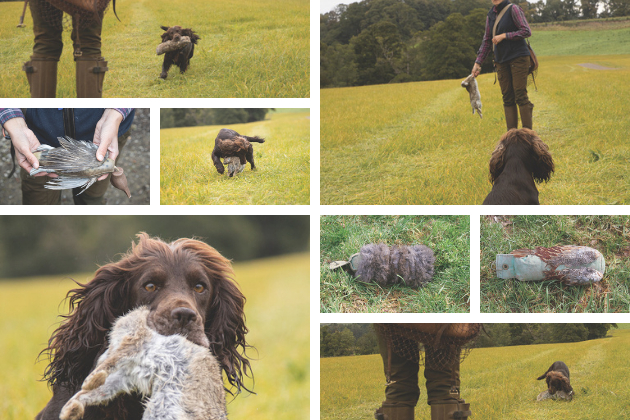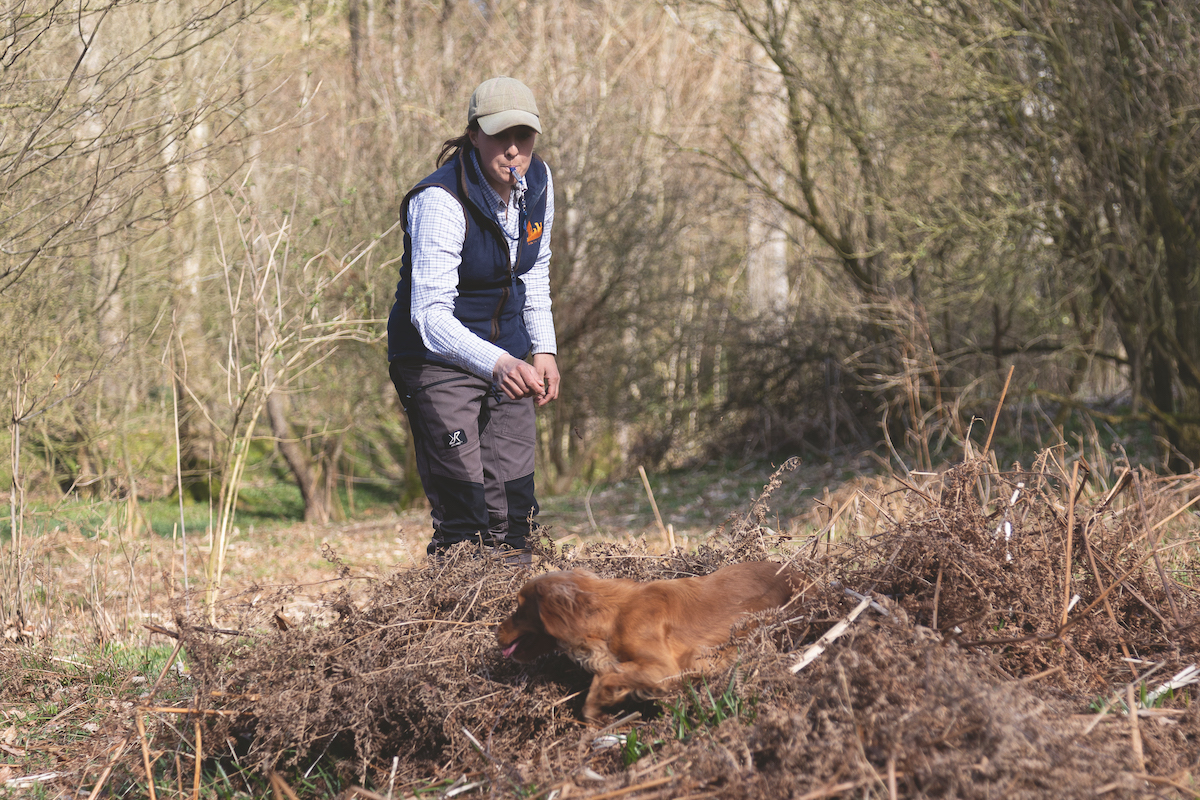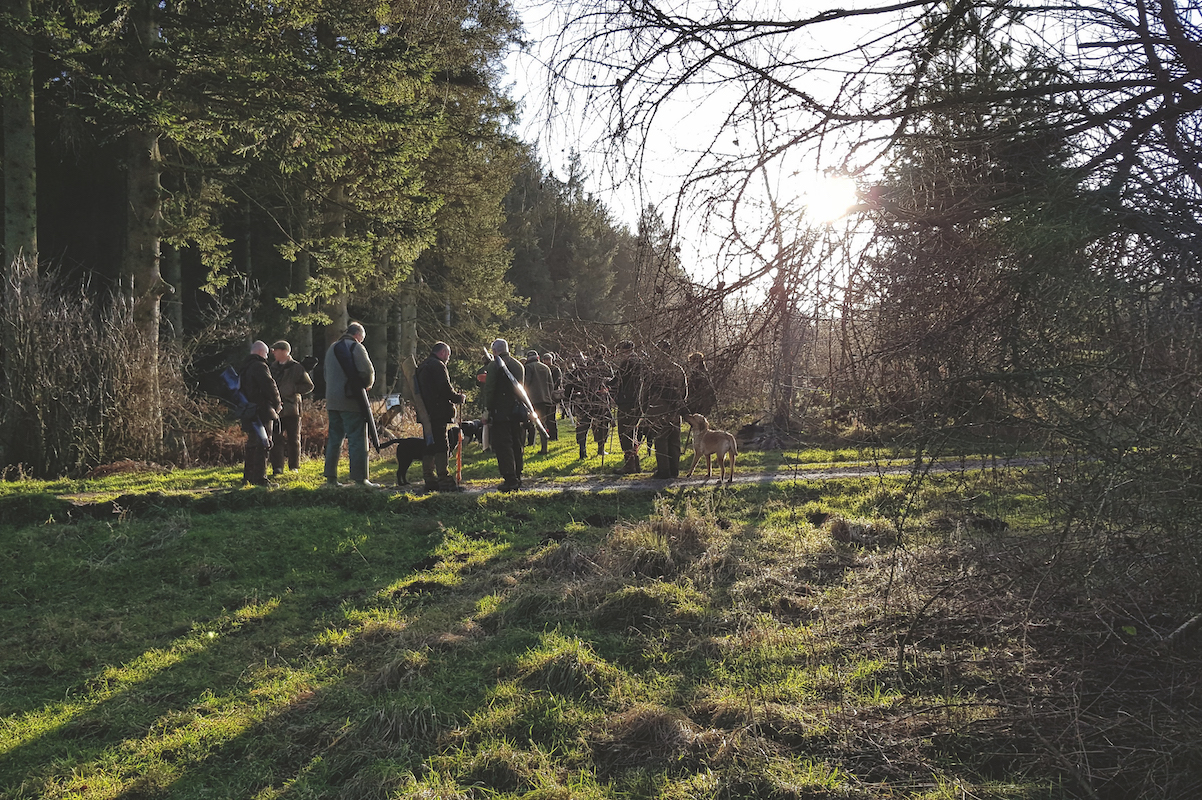Training your young gundog – from dummies to game
Fran Ardley takes you through the transition from training your dog with dummies to the real thing

Most, if not all, of your early gundog training will be using tennis or fur balls and canvas dummies. But at some point you will have to give your young dog the opportunity to pick cold game. This can be fur or feather but, whatever you decide to use, make sure it is fully defrosted and is not damaged. You should especially make sure there are no open wounds, as this can cause all sorts of issues when asking a dog to make its first cold game retrieve.
For many novice trainers, this part of their dog’s training can be nerve-racking. Although for the majority of dogs it will go without any problems, it should be done with thought and consideration.
Being confident in picking-up game is not something that needs to be trained too early; doing so can have a negative effect on some dogs. I fully understand the desire for an owner to see if their dog will pick game; I see the same emotion with handlers wanting to make sure their gundogs are going to be OK with the sound of gunshot.
Their own pace
I never put time limits on my dogs in terms of what they should be doing at any particular age; I would rather let a young dog go at its own pace and make sure every lesson is fully understood and embedded.
Introducing cold game too early can put dogs off wanting to retrieve dummies. Cockers can be prone to this, which can make ongoing training more challenging, especially during the summer when game is scarce and dummies have to be used.

This canvas dummy is wrapped in a pheasant wing
First things first
Before you even consider letting your dog retrieve cold game, it should be a confident and competent retriever of dummies, preferably both canvas and fur.

Rabbit fur-covered dummies are also available
There are plenty of fur dummies available on the market and you can now buy cured pheasant pelts that you can tie on to normal canvas dummies. These are a good halfway-house training aid as they accustom a young dog in picking up retrieves that have different textures and weight, and instil confidence in the dog.

There are some realistic dummies on the market
The other consideration is that a dog has to be physically able to pick up the retrieve. I like to use small rabbits and partridges and I avoid cock pheasants until the dog is fully mature and strong enough to bring one back to hand.

Your dog must be confident and competent in retrieving dummies, canvas and fur
Drop, don’t throw
When I set up my initial cold game retrieves, I try to keep everything calm and avoid the dog getting too excited. To begin with I let the dog have a few straightforward fur-covered dummy retrieves, then sit it up and walk out a few metres and place the cold game. The reason I walk out and drop the game rather than throw it out is that this helps to keep the dog’s excitement levels down. I also place the retrieve belly down so it is easier for the dog to pick up.

Drop, don’t throw
Before you even consider trying your young dog with a cold game retrieve, you should ensure that they are confident in picking and delivering to hand various dummies. These dummies should be with either pheasant pelts or wings attached to them; there are also rabbit fur covered dummies. If your dog does not currently have a solid retrieve then I would advise against moving to this stage. A cold bird or rabbit can become real treasure for a young dog and this may tempt them to avoid coming back to their handler, or even running off.
Gundog training at home
Gundog training: It’s possible to conduct gundog training at home even with no prior experience.
Gundog training in the spring and summer
Gundog training: The close season months take the pressure off gundog training.
The other consideration is that a dog has to be physically able to pick up the retrieve. I like to use small rabbits and partridges and I avoid cock pheasants until the dog is fully mature and strong enough to bring one back to hand.
Recall retrieve

Tailor your retrieve depending on the dog’s energy levels
You now have two choices when sending the dog for the retrieve: a recall pick-up; or a straightforward send-out retrieve. I will make my decision depending on the dog’s energy levels. If I have a really buzzy dog in training I will tend to recall; if I have a more level-headed dog, I will cast them from my side. The advantage of the recall retrieve is that the dog is coming into the cold game at a slower pace and is already coming towards you. This will help to reduce any excitement spikes in the dog.

As soon as the dog picks the retrieve, get on the recall whistle …

… so it doesn’t have time to think of anything but coming back to you
Timing the recall whistle
The first few times your dog comes across cold game it will probably hesitate and be unsure of what to do. As soon as your dog picks up the retrieve, get on the recall whistle — don’t give it time to think of doing anything other than coming straight back to you. But do be careful not to give the recall command too soon as you can pull the dog off the retrieve.

Build up your dog’s confidence before sending it to pick heavy game
All about balance
The one thing that your dog will have to learn is how to balance the cold game. It will probably have been trained on firm dummies and now it will have to cope with loose wings and legs and tails dragging on the floor. There will also be a weight distribution to work out, which all takes experience and is why you shouldn’t overwhelm your dog in the early days by using cock pheasants. You can build up your dog’s confidence by gradually using heavier dummies in its earlier training.










